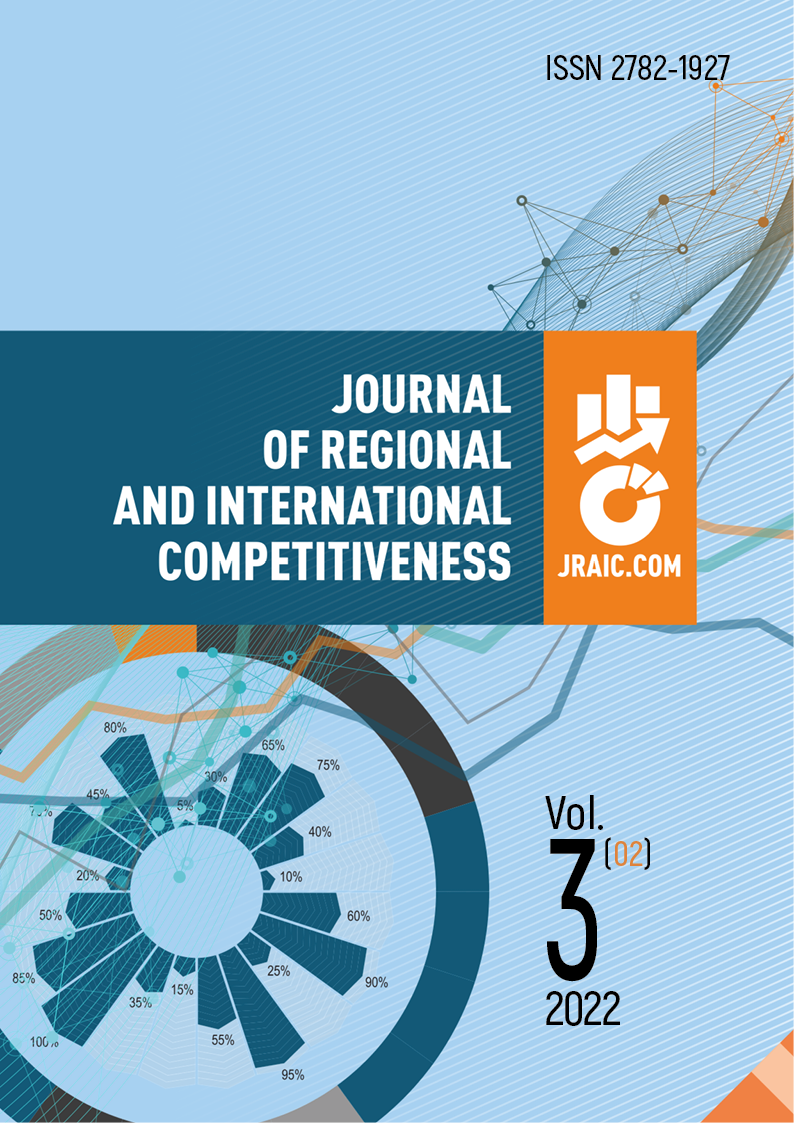Moscow, Moscow, Russian Federation
The article dwells on the study of network ‘core-periphery' production structure as a firm pattern of EU automotive manufacturing. The Visegrad countries integration into the sector of EU economy is dissected with multiscalar approach. The first section of the paper deals with the complex analysis of geographical, structural, and topological foundations of the network ‘core- periphery' model. In the second section the quantitative assessments are elaborated to demonstrate the relevant properties of the EU automotive core-periphery pattern. As a result, two of four empirical hypotheses have been proved. It has also been suggested that EU automotive core-periphery dynamics follows the introduced ‘factor price equalization cycle'. The results obtained allow for the further forecasting of the European network core-periphery model evolution. The insufficiency of regional-level data is a limitation of the study conducted.
VISEGRAD COUNTRIES, AUTOMOTIVE MANUFACTURING, FIRM-LEVEL INTEGRATION, NEW ECONOMIC GEOGRAPHY, GLOBAL PRODUCTION NETWORKS, TRADE IN INTERMEDIATES, NODE CENTRALITY, FACTOR PRICES
1. Baldwin, R. E., & Martin, P. (2003). Agglomeration and Regional Growth. CEPR Discussion Paper, 3960. Retrieved from https://ssrn.com/abstract=436996
2. Brakman, S., & van Marrewijk, C. (2015). Factor prices and geographical economics. In C. Karlsson, M. Andersson, & T. Norman (Eds.), Handbook of Research Methods and Applications in Economic Geography (pp. 67–82). Edward Elgar Publishing.
3. Caviggioli, F., Colombelli, A., De Marco, A., Scelato, G., & Ughetto, E. (2022). Co-evolution patterns of university patenting and technological specialization in European regions. The Journal of Technology Transfer. Retrieved from https://doi.org/10.1007/s10961-021-09910-0
4. Chirot, D., & Hall, T. D. (1982). World-System Theory. Annual Revew of Sociology, 8, 81-106.
5. Cingolani, I., Iapadre, L., & Tajoli, L. (2018). International production networks and the world trade structure. International Economics, 153, 11–33. Retrieved from https://doi.org/10.1016/j.inteco.2017.10.002
6. McKinsey & Company. (2019). RACE 2050 – A vision for the European automotive industry. Retrieved from https://www.mckinsey.de/~/media/ McKinsey/Locations/Europe%20and%20Middle%20East/Deutschland/News/Presse/2019 /2019-01-08%20Race%202050/Report_Race2050_A%20Vision%20for%20the%20Europ ean%20 automotive%20industry.ashx.
7. De Lombaerde, P., Iapadre, L., McCranie, A., & Tajoli, L. (2019). Using network analysis to study globalization, regionalization, and multi-polarity. Network Science, 6(4), 494-516. DOI:https://doi.org/10.1017/nws.2018.25.
8. Deardorff, A. V. (1998). Fragmentation in Simple Trade Models. The North American Journal of Economics and Finance, 12, 121-137.
9. Dicken, P. (2004). Geographers and ‘globalization’: (yet) another missed boat? Transactions of the Institute of British Geographers, (29), 5–26.
10. Farhauer, O., & Kröll, A. (2012). Diversified specialisation – going one step beyond regional economics’ specialisation diversification concept. Jahrb Reg wiss, 32, 63-84 Retrieved from https://doi.org/10.1007/ s10037-011-0063-9.
11. Fedyunina, A. (2016). Trade liberalisation and its impact on regional development: theoretical and experimental studies. Baltic Region, 8(3), 70-83.
12. Gaspar, J. M. (2020). New Economic Geography: Economic Integration and Spatial Imbalances. In S. Colombo (Ed.), Spatial Economics (pp. 79-110). Cham.: Palgrave Macmillan. Retrieved from https://doi. org/10.1007/978-3-030-40098-9_4.
13. Hidalgo, C. A. (2021). Economic complexity theory and applications. Nature Reviews Physics, 3(2), 92-113. Retrieved from https://doi.org/10.1038/s42254-020-00275-1.
14. Hidalgo, C.A., & Hausmann, R. (2009). The building blocks of economic complexity. Proceedings of the National Academy of Sciences, 106, 10570-10575.
15. Jakubiak, M., Kolesar, P. J., Izvorski, I. V., & Kureková, L. M. (2008). The automotive industry in the Slovak Republic: recent developments and impact on growth. Washington, DC: The International Bank for Reconstruction and Development.
16. Jessop, B. (2005). The Political Economy of Scale and European Governance. Journal of Economic and Human Geography, 96(2), 225–230. Retrieved from https://doi.org/10.1111/j.1467-9663.2005.00453.x
17. Jones, R., Kierzkowski, H., & Lurong, C. (2005). What does evidence tell us about fragmentation and outsourcing? International Review of Economics & Finance, 14(3), 305-316. Retrieved from https://doi.org/10.1016/j.iref.2004.12.010
18. Klier, T. H., & Rubenstein, J. M. (2017). Mexico’s growing role in the auto industry under NAFTA: Who makes what and what goes where. Economic Perspectives, 41(6), 1-29.
19. Brincks, C., Domański, B., Klier, T., & Rubenstein, J. M. (2018). Integrated peripheral markets in the auto industries of Europe and North America. International Journal of Automotive Technology and Management, 18(1), 1-28. Retrieved from https://doi.org/10.1504/ijatm.2018.10011325
20. Kolomak, E. (2013). Uneven Spatial Development in Russia: Explanations of New Economic Geography. Voprosy Ekonomiki, (2), 132-150. Retrieved from https://doi.org/10.32609/0042-8736-2013-2-132-150 (in Russian).
21. Kondrat’ev V., Popov V., & Kedrova, G. (2020). Global Value Chains Transformation: Three Industries’ Cases. World Economy and International Relations, 64(3), 68-79. Retrieved from https://doi. org/10.20542/0131-2227-2020-64-3-68-79
22. Krugman, P. (1991). Increasing Returns and Economic Geography. Journal of Political Economy, 99(3), 483-499. Retrieved from https://doi.org/10.1086/261763
23. MacPherson, A., & Krugman, P. (1992). Geography and Trade. Economic Geography, 68(2), 216-218. Retrieved from https://doi.org/10.2307/144207
24. Martínez-Zarzoso, I., Voicu, A. M., & Vidović, M. (2011). CEECs Integration into Regional and Global Production Networks. Econometrics: Applied Econometrics & Modeling eJournal, 125.
25. Coe, N. M., Dicken, P., & Hess, M. (2008). Global production networks: realizing the potential. Journal of Economic Geography, 8(3), 271-295. DOI:https://doi.org/10.1093/jeg/lbn002
26. Coe, N. M., & Wai-chung Yeung, H. (2019). Global production networks: mapping recent conceptual developments. Journal of Economic Geography, 19(4), 775-801. DOI:https://doi.org/10.1093/jeg/lbz018
27. Pavlínek, P. (2018). Global Production Networks, Foreign Direct Investment, and Supplier Linkages in the Integrated Peripheries of the Automotive Industry. Economic Geography, 94(2), 141-165.
28. Rauhut, D., & Humer, A. (2020) EU Cohesion Policy and spatial economic growth: trajectories in economic thought. European Planning Studies, 28(11), 2116-2133, DOI:https://doi.org/10.1080/09654313.2019.1709416
29. Rutherford, T. D., & Holmes, J. (2014). Manufacturing resiliency: economic restructuring and automotive manufacturing in the Great Lakes region. Cambridge Journal of Regions, Economy and Society, 7(3), 359–378. Retrieved from https://doi.org/10.1093/cjres/rsu014
30. Simonazzi, A., Jorge Carreto Sanginés, J., & Russo, M. (2020). The Future of the Automotive Industry: Dangerous Challenges or New Life for a Saturated Market? Institute for New Economic Thinking Working Paper Series, 141.
31. European Commission (2022). Internal Market, Industry, Entrepreneurship and SMEs. Single Market Act. Retrieved from https://ec.europa.eu/growth/single-market/single-market-act_en
32. Veeramani, C. (2009). Impact of Imported Intermediate and Capital Goods on Economic Growth: A Cross Country Analysis. Econometrics: Data Collection & Data Estimation Methodology eJournal.
33. Vlčková, J. (2018). Visegrad countries in global production networks: Value creation, control and capture. Geographia Polonica, 91(4), 427–448. Retrieved from https://doi.org/10.7163/gpol.0129
34. Wuthnow, R. (1979). The emergence of modern science and world system theory. Theory and Society, 8(2), 215-243. Retrieved from https://doi.org/10.1007/bf00171365




















